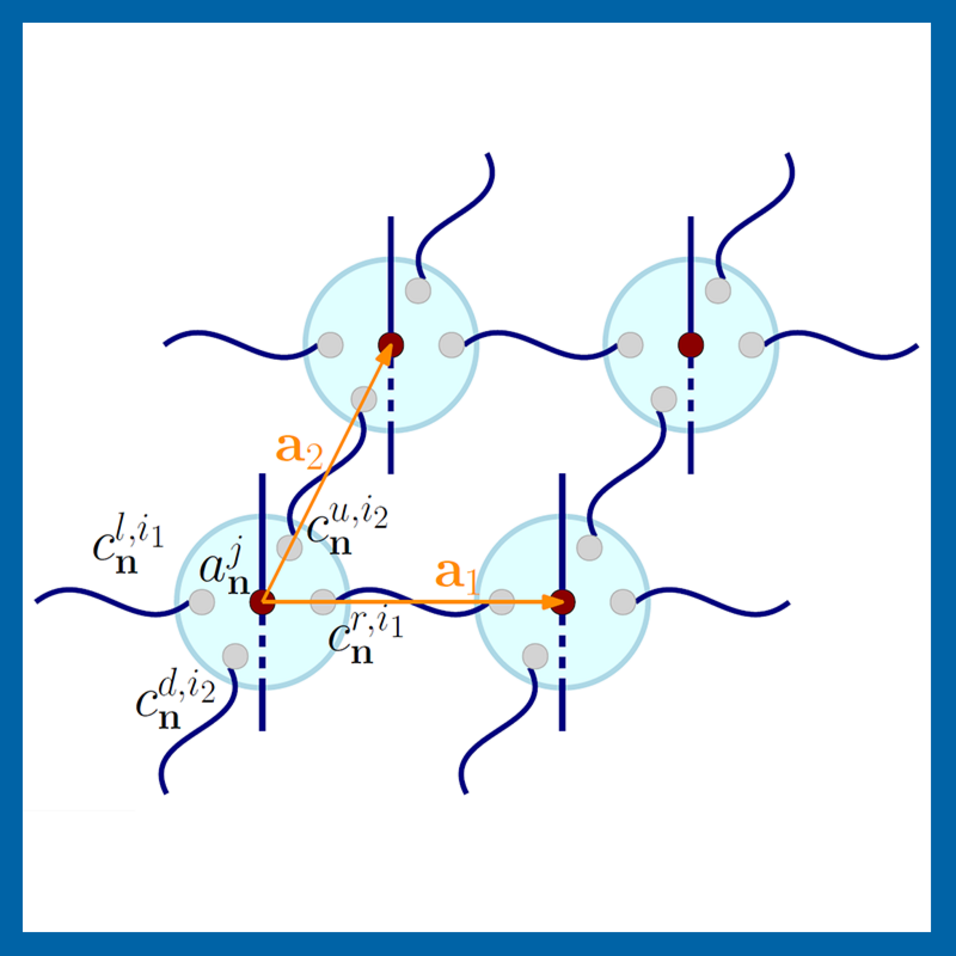This question is addressed in a new work by our group leader Norbert Schuch, co-authored jointly with Quinten Mortier, Jutho Haegeman, and Frank Verstraete from Ghent University, which has just appeared in Physical Review Letters.
Tensor networks form a powerful framework for efficiently describing systems with a bounded amount of entanglement – the entanglement area law. However, an important class of systems – fermionic systems with a Fermi surface, i.e. systems with metallic behavior – do not satisfy this area law, but exhibit a significantly larger amount of entanglement. This raises the question whether tensor network techniques are still applicable to this important class of systems.
In the present work, this question is answered in the affirmative: Tensor networks can resolve Fermi surfaces faithfully. To confirm this, the authors carry out extensive numerical simulations for large systems sizes and bond dimensions, which clearly demonstrate the ability of two-dimensional tensor networks – so-called Projected Entangled Pair States (PEPS) – to efficiently approximate systems with a Fermi surface.
Specifically, they find that the energy precision as a function of the PEPS bond dimension improves as a power law, illustrating that an arbitrary precision can be obtained by increasing the bond dimension in a controlled manner. Their work also points out the existence of certain obstructions to the description of Fermi surfaces, rooted in the non-trivial topology of the system – but at the same time, they show how these obstructions can be circumvented by carefully choosing boundary conditions and system sizes, thereby enabling one to obtain a faithful description of systems with Fermi surfaces.
To learn more, have a look at the paper on the arXiv (open access), or the published version at Physical Review Letters [Phys. Rev. Lett. 129, 206401 (2022)].
This work has received support through the ERC grant SEQUAM.

